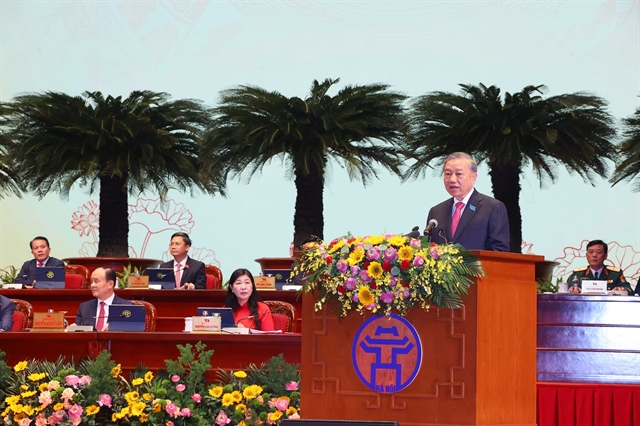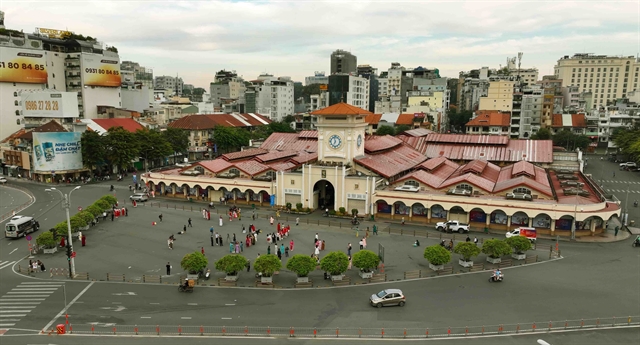 Life & Style
Life & Style

Journalist Nguyễn Bông Mai has recently inspired many people in Hà Nội with her photo exhibition titled Dám Sống Một Cuộc Đời Rực Rỡ (Dare to Live a Brilliant Life), which features her journey throughout Việt Nam to gather information and images on traditional costumes of ethnic groups.
The journey was made in 99 days, between February 2 and June 6, 2022. Mai drove herself through 10,000km, 44 provinces and 80 villages. She has collected images of 55 costumes of 35 ethnic groups.
Lê Hương chats with Mai on the journey and its results.
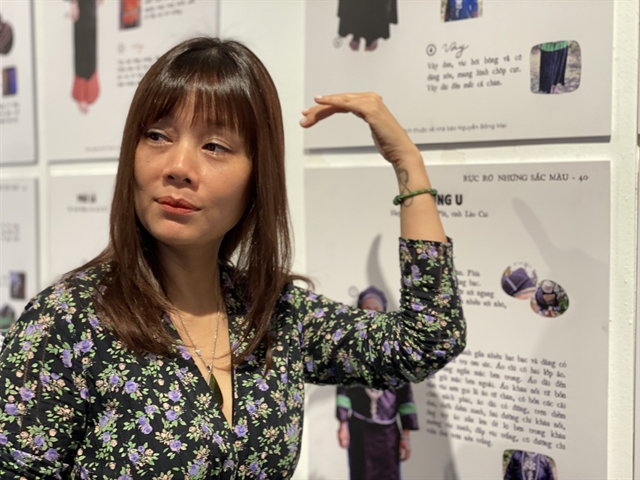
|
| Mai talks about costumes she learnt about. VNS Photo Lê Hương |
How did you come up with the idea of the journey? Why did you decide to travel alone rather than in a team?
I think women are limited by too many prejudices. Whatever they want to do may be frowned at and people will say: you cannot do this, cannot do that.
I want to prove that women can do everything provided that they want to. Nothing can bind them: money or time.
I joke that this journey is my journey to quit my children. I have raised up my children for the past 20 years alone. Now I think I rely on my children too much. My children told me: you can get married once more so that we don’t have to worry about you anymore. It means that they are worrying for me now and I may hinder them to do things. So I’m trying to live independently from my children.
My next purpose is that in five years, I can take a trip around the world. At that time, I and my two children will be three independent people.
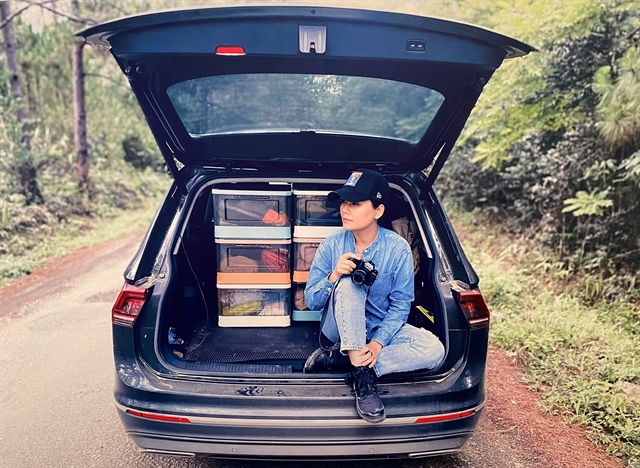
|
| Mai with her ''only companion'' on the journey. Photo courtesy of Nguyễn Bông Mai |
Did you find any difficulties during the trip?
Actually, I was fairly lucky. I did not find any obstacles at all. I learnt how to fix my car when it breaks. I learnt when to start driving and when to stop to avoid difficult situations. A week ahead of the journey, I practised how to film, put data in the computer, recharge the devices. But I failed to do those tasks in the first week of the journey as things did not happen as I expected. I had too many things to pay attention to, not only those tasks.
Why have you chosen traditional costumes to focus on?
I have chosen ethnic culture to focus on, and I narrowed it down to women’s costumes. I read books for three months before going and marked out the map I should follow.
Each detail in a traditional costume has its own meaning. For example, Dao Tiền ethnic group embroiders a dog on their costume. They have handed down a legend saying that when the first people of the group moved from China to Việt Nam hundreds of years ago, they forgot to bring along a white scarf, which was very important to women. They asked a dog to swim back to get the scarf. Then, they embroidered the dog image on the costume to pay tribute to the dog.
You may see a bun of hair on the heads of women of the Si La group. The bun is passed down to women of the next generation as a treasure. No one can touch the bun, only the women themselves.
Pa Dí women wear a scarf on top of their heads.
If I did not spend time to learn, I would never know.
Inside the Mông group, there are five different sub-groups. Each of them has different costumes.
Phù Lá people in Điện Biên wear different costumes to Phù Lá people in Lào Cai Province.
I advise people who want to go throughout Việt Nam like me that they should start from the south up to the northern mountains. Because many interesting things will be found in northern mountains. The trip will get more and more interesting.
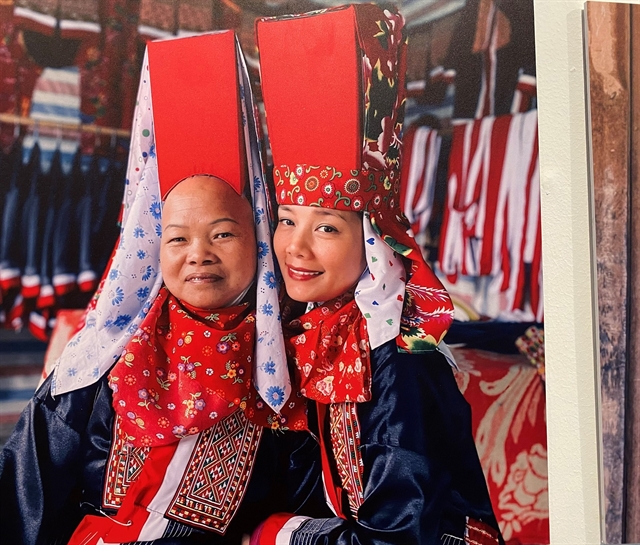
|
| Mai with a woman of the Dao Thanh Phan ethnic group in Quảng Ninh Province. Photo Courtesy of Nguyễn Bông Mai |
You have met many people? Who impressed you the most?
Every person I met on the journey brought a valuable story. I have chosen some stories, some people to feature in the photo exhibition.
I’m a Buddhist, so I believe in fate. I believe that Mua, a 9-year-old paralysed girl of the Mông ethnic group in Hà Giang was waiting for me in her poor house. No one had come to rescue her in the past 10 years. When I was taking photos of her brother at the door, I heard voices of a girl from the empty house. I stepped in and found out she was there lying alone in a chair. The room was smelly as she could not move to the restroom. Their parents were working in the field. The first sentence she asked me: Who you are? I understood that she had no trouble with her brain and she just could not move.
There are many unlucky children even in our city. Yet I believe my fate led me to meet Mua. Her mom gave birth to her when she was only 17, and lacked proper knowledge to take care of the baby. Mua got a fever and convulsions at 10 months old and then could not move. The family is so poor and they have not been able to take Mua to the hospital to check up.
I have called for support for Mua. Đông Đô Hospital has committed to offer free treatment and meals for Mua and her mom. The treating process may take very long, several years, depending on Mua’s efforts and her family’s efforts as well, until she can move properly. Doctors will combine both eastern and western medicine to treat her disease. Her brain has not been damaged, according to doctors.
I have set up a fanpage on Facebook titled Cùng Mua Khôn Lớn (Growing Up with Mua) so that people can follow and support her. I will let the hospital host the charity fund. I’ll help spread Mua’s story. I hope many more people support her during the process.
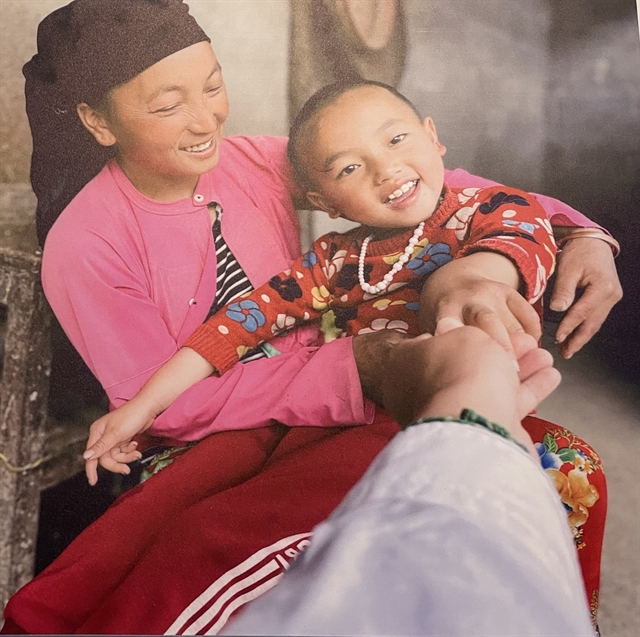
|
| Mua and her mom. Photo Courtesy of Nguyễn Bông Mai |
Please tell me about your next plan!
I plan to publish two books later this year. A book on traditional costumes with sketches, not photos like those in this exhibition. The producing team includes very young people of my daughter’s age. I want them to look at traditional culture from their young angles. They have the right to create things from materials I have.
The second book will be on my journey. There are many incidents that I want to share: the process to learn more about myself and about human love that I received during the trip.
I will release them in August, near my birthday.
After this costume project, I will start on traditional music melodies. I have collected 49 folk melodies during the trip. VNS



